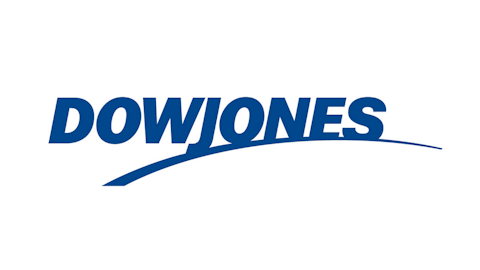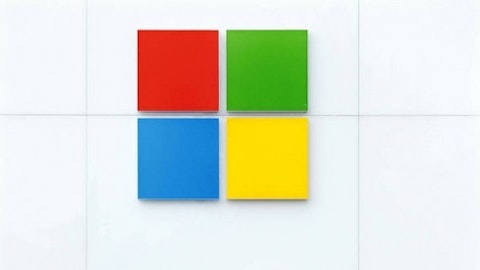Semiconductor companies, in order to enhance their presence in the market and generate higher revenue, are coming out with new processors. The global semiconductor industry reported sales of $291.6 billion in 2012. The World Semiconductor Trade Statistics estimates that the semiconductor market will grow by 4.5% this year, as compared to 3.2% last year. The new and upgraded processors produced by these companies will fulfill current demand and drive future growth.
In this article, I have covered three companies that manufacture semiconductors and are well-known for their chip manufacturing technology, positive performance, and innovative ideas.
New product with strong backlog
ARM Holdings plc (ADR) (NASDAQ:ARMH) announced its plan to launch a new chip, the Cortex-A12, next year. This new chip is designed to replace the five year old Cortex-A9. This chip will help the company target low-to-mid range smartphones and tablets ranging from $150-$350. It is expected that the majority of the smartphone market will be covered by low-to-mid range devices in the upcoming years.
The Cortex-A12 will increase processing speed by 40% compared to the Cortex-A9. Also, the Cortex-A12 chips are 30% smaller, with better battery life than Cortex-A9. This will improve the performance of mid-range phones without increasing their prices. The Cortex-A12 can be configured with the Cortex-A7 processor, which will improve power efficiency by almost 100%. ARM Holdings plc (ADR) (NASDAQ:ARMH) anticipates that the Cortex-A12 will let it address 580 million smartphones and tablet devices by 2015 with its functionality, performance, and power-efficiency.
ARM Holdings plc (ADR) (NASDAQ:ARMH)’s licenses contribute nearly 40% to the company’s total revenue. Its license revenue has seen a rise of 24% year-over-year to $95 million in the first quarter. License revenue is mainly driven by its backlog, which was approximately $100 million in 2012. Its backlog consists of around 73% of processor licenses, 13% of physical IP, and 14% of support and maintenance.
In this quarter, more than 70% of the processor license revenue was generated from the backlog, versus the normal 40%-60%. The backlog has increased by 5% and the company has signed 22 new processor licenses across the multiple-end market. ARM expects that around 24% of the backlog will be converted into revenue by the second or third quarter of 2013, and 55% by the second quarter of 2014. Its backlog has grown 3.5 times from 2010 and the company is expecting annual growth of 21.75%, generating $1.11 billion by the end of this year.
In the last five years, ARM Holdings plc (ADR) (NASDAQ:ARMH)’s shares went up almost nine times and dividend per share has more than doubled. ARM has a good dividend history in the last five years. It has shown progressive dividend growth from $0.04 per share to $0.07 per share. The current PEG ratio of less than one also reflects that it’s still potentially undervalued.
Tegra and GRID will drive the future
NVIDIA Corporation (NASDAQ:NVDA)’s “Tegra” computing chipset has contributed 30% to the company’s total revenue this year. It launched “Tegra4i”, which is the first fully-integrated 4G LTE mobile processor, in February 2013. According to the Yankee group, 4G/LTE-enabled mobile devices are expected to grow from 126 million in 2013 to 720 million by 2016. Tegra4i will help the company enhance its footprint in the smartphone market by offering better multimedia and visual experience in smartphones. It also fulfills the rising demand for wireless display resolutions and mobile games consoles.
Total smartphone shipments are expected to grow at a compounded annual growth rate of 20% to reach 2.2 billion units from 2012 to 2016. Tegra4i, with its super-fast web surfing, faster application loading, and strong battery life, will cater to the rising demand of smartphones.
NVIDIA Corporation (NASDAQ:NVDA) is also expecting to get approval from AT&T Inc. (NYSE:T) to use Tegra4i in its mobiles by January 2014. With these developments, the company expects that the total addressable market will expand to $10 billion by 2016, from $765 million in 2012. This growth will pace up from the third quarter of this fiscal year.
NVIDIA’s GRID is a set of technologies that facilitates high graphic resolution in desktop applications and games, and in fast streaming of complex applications via networks. The company expects $10 billion of total addressable market by 2016. Under this, it expects a growth opportunity of $2 billion from cloud gaming, which is gaining an advantage over the traditional console gaming system.
A growth opportunity of $3 billion exists from the Visual Computing Appliances, or VCA, which is a strong GPU-enabled system that helps in running various applications of Adobe, Autodesk, and Dassault Systems. These graphics applications are displayed on the client’s computers with a rich graphics experience.
Additionally, GRID, with its Visual Desktop Infrastructure, accounts for $5 billion of growth opportunities. There are 700 million enterprises workers, 160 million knowledge workers, and certified partners like Dell Inc. (NASDAQ:DELL), Hewlett-Packard Company (NYSE:HPQ), International Business Machines Corp. (NYSE:IBM), and Cisco Systems, Inc. (NASDAQ:CSCO), that will help NVIDIA achieve its targets.
With all these initiatives, it is expected that NVIDIA Corporation (NASDAQ:NVDA) will achieve the total revenue of $4.42 billion this year, and $4.84 billion next year, in comparison to its $4.28 billion revenue in 2012.
New products for future growth
Intel Corporation (NASDAQ:INTC) has recently announced the release of its next-generation processor, “Haswell.” This processor is 15% better in terms of performance, and has around 50% more battery life, when compared to the previous Ivy Bridge processor. It consumes only seven watts of energy, compared to 10 watts consumed by Ivy Bridge.
Haswell will be integrated in Hewlett-Packard Company (NYSE:HPQ)’s new desktops and laptops, whereas Microsoft Corporation (NASDAQ:MSFT) will use the Haswell chip in its gaming laptops. Haswell 22nm technology integrates the processing and graphics functions on a single chip. Its enhanced integrated GPU gives a rich gaming experience. Haswell will add 14%-16% to Intel’s shipments in the third quarter of 2013, and Intel expects to generate total revenue of $54.71 billion for the fiscal year 2013, up from $53.3 billion in 2012.
Recently, Intel Corporation (NASDAQ:INTC) has also started offering its solid state drive, or SSD DC3500. This drive is more cost and power efficient and it focuses on data centers and cloud-computing applications. By using this drive in the data centers, it will increase multi-core CPU utilization, lowering rack space and power consumption. The SSD DC3500 series will replace the hard disk drive, or HDD, helping data centers to save money.
With these new products, Intel Corporation (NASDAQ:INTC) expects to generate total revenue of $54.71 billion for fiscal year 2013, up from $53.3 billion in 2012.
Intel Corporation (NASDAQ:INTC) has a long history of providing rewards to income investors. In 2012, Intel Corporation (NASDAQ:INTC) spent $4.4 billion on dividends, $4.8 billion on buybacks, and earned $11 billion of net income. It returned over 83% of its net income to shareholders last year. It declared a dividend of $0.90 on an annual basis, with a yield of 4.15%. To strengthen its cash position, the company took on an additional $6 billion of debt in December 2012 to facilitate the buybacks. Going forward, the company is hoping to return 40% of its free cash flow in the dividend program.
Conclusion
ARM Holdings plc (ADR) (NASDAQ:ARMH), with its Cortex-A12 and strong backlog, will generate higher future revenue and growth.
NVIDIA Corporation (NASDAQ:NVDA)’s Tegra4i and GRID may have the total addressable market of $20 billion by 2016, and the continuous effort to improve technology seems good for the company’s future growth.
Intel’s move toward cloud computing, with its SSD DC3500 and 22nm Haswell technology, will drive its future growth.
I suggest buying all of these stocks.
Shweta Dubey has no position in any stocks mentioned. The Motley Fool recommends Intel and NVIDIA. The Motley Fool owns shares of Intel.
The article Should You Buy These Semiconductor Companies? originally appeared on Fool.com.
Copyright © 1995 – 2013 The Motley Fool, LLC. All rights reserved. The Motley Fool has a disclosure policy.






